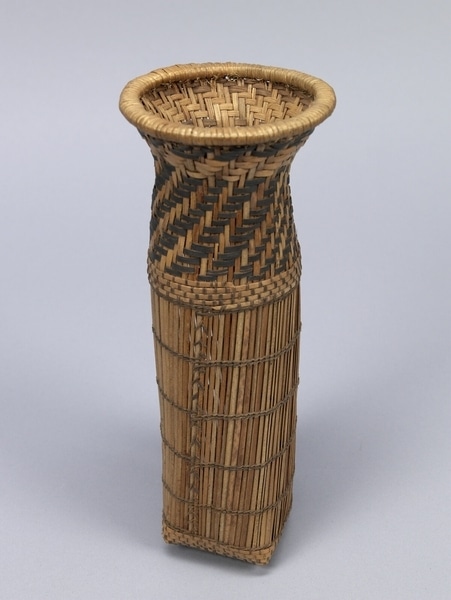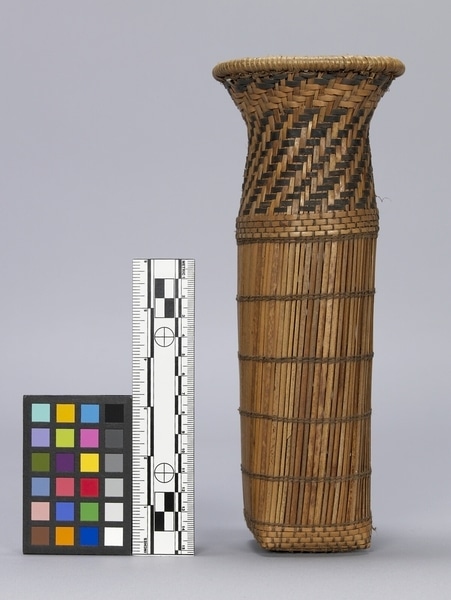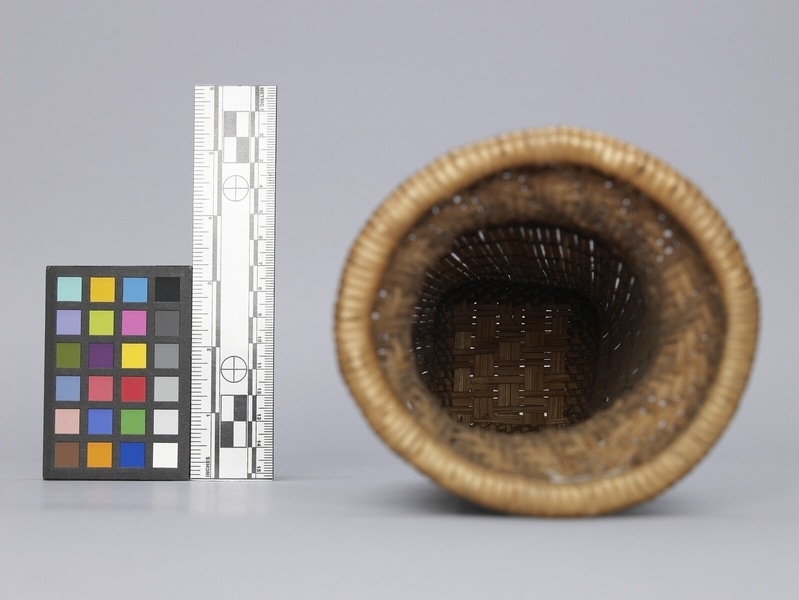Sieve Item Number: Ac229 from the MOA: University of British Columbia



Description
Cylindrical object which tapers then flares widely to large light brown wrapped rim with a convex base. Light brown with dark brown designs. Upper third at flaring mouth in uniform diagonals of light brown alternating with dark brown formed by two/three twill interlacing. Main body, of lower two-thirds, in widely-spaced weft twining: fine dark brown fibre weft elements, four horizontal lines, over stiff light brown warps. Base is interlacing with irregular order. Woven to surface over warps above and below weft-twined body are long horizontal elements around circumference.
History Of Use
Sieves were used for food preparation, possibly with a spirtual or educational context as well. The decorative coiling on this basket commonly relates to divination. In regards to food preparation, corn, having been removed from husks, is first pounded with mortar and pestle then sifted through weave of this kind of material container.
Cultural Context
Demonstration
Narrative
The collector, Nellie Taylor, served as a nursing missionary (1900-1920), first with the Ovimbundu at Bihe, then with the Chokwe at luma Kasai. She belonged to a group who sponsored several missions across Central Africa from 1881-1931.
Item History
- Made in Luma Kasai, Angola before 1920
- Collected between 1900 and 1920
- Owned by Nellie Taylor
- Owned by Gladys G. Cameron before January 12, 1979
- Received from Gladys G. Cameron (Donor) on January 12, 1979
What
Who
- Culture
- Chokwe
- Previous Owner
- Nellie Taylor and Gladys G. Cameron
- Received from
- Gladys G. Cameron (Donor)
Where
- Holding Institution
- MOA: University of British Columbia
- Made in
- Luma Kasai, Angola
When
- Creation Date
- before 1920
- Collection Date
- between 1900 and 1920
- Ownership Date
- before January 12, 1979
- Acquisition Date
- on January 12, 1979
Other
- Item Classes
- basketry
- Condition
- good
- Accession Number
- 0509/0006